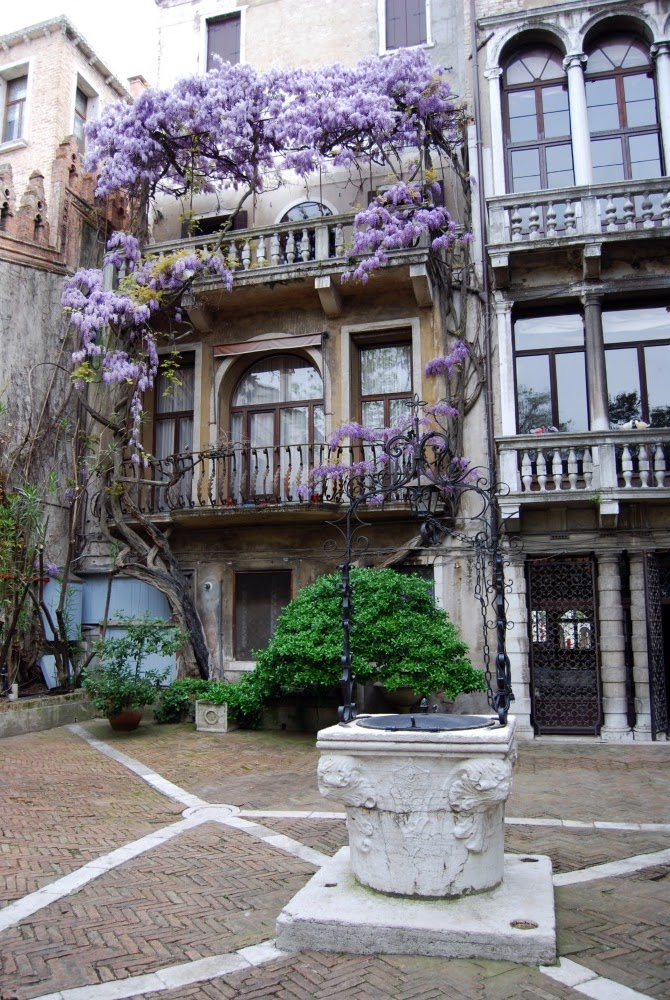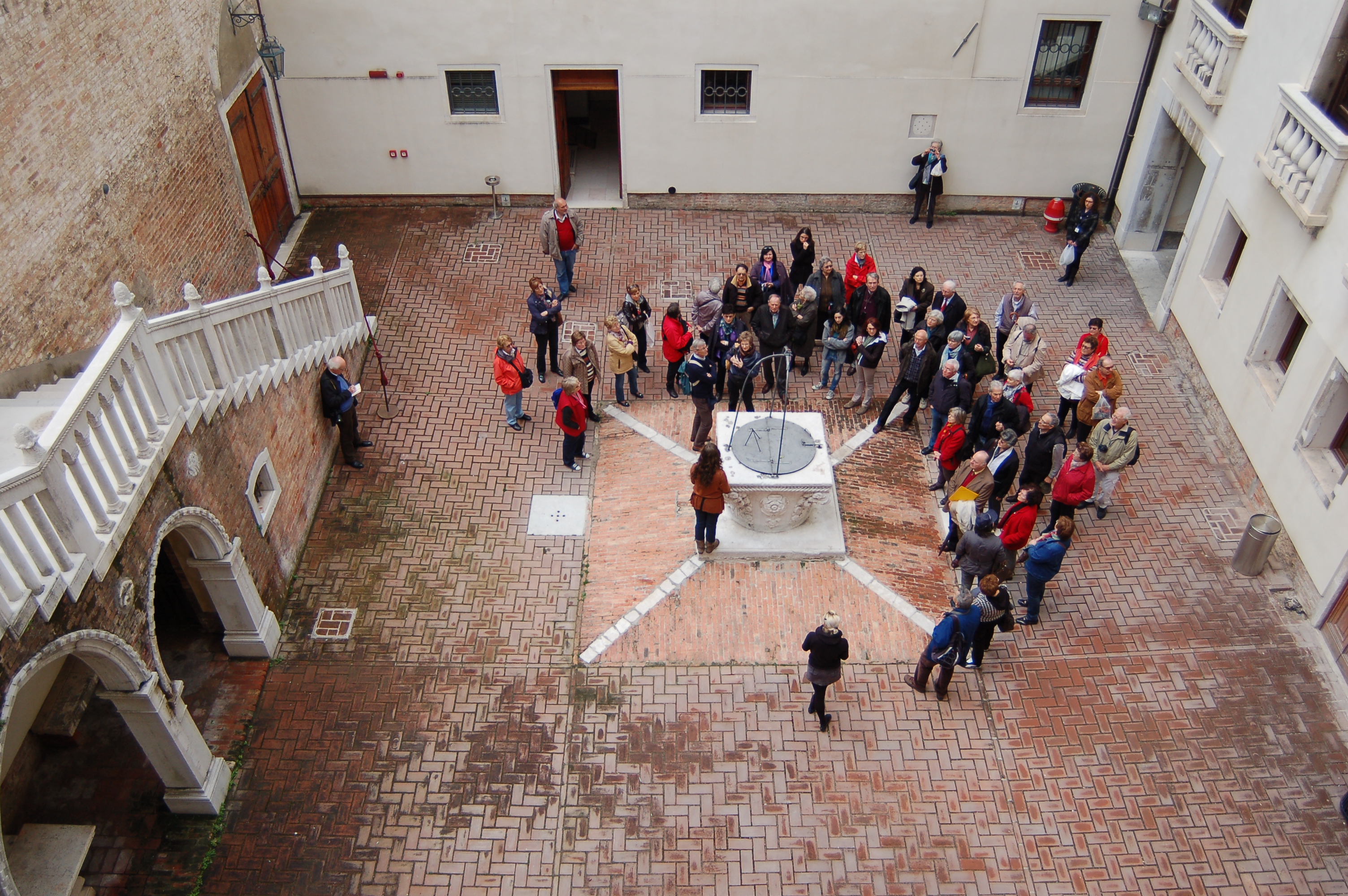
Giustinian Palace Garden
This post is also available in:
 Italiano (Italian)
Italiano (Italian)
Palazzo Giustinian is one of the most beautiful expressions of the late Venetian Gothic period. It consists of two twin buildings, both commissioned in the second half of the XV century by the prestigious and very ancient Giustinian family. Both buildings were sold in the XIX century; the painter Natale Schiavoni lived here and installed a valuable art collection, while the composer Richard Wagner wrote here the second act of “Tristan and Isolde”, between 1858 and 1859.
THE PALACE
It consists of two twin buildings: the one on the right is known as Ca’ Giustinian dei Vescovi, after the family that lived there, and currently houses the the “Ca’ Foscari” University; the other structure is owned by the noble family Brandolini D’Adda from Friuli, along with Ca’ Giustinian dalle Zogie.
The buildings are developed on four floors with an L-shaped plan. The entire façade, symmetrically developed, was created to give prominent compactness to the structure, nonetheless still perceived as the fusion of two separated buildings.
Each building has central windows which bring light to the main halls. There are several monoforas decorated with flowers and surrounding the central windows. On the second floor, however, some elaborate carvings decorate the windows.
Ca’ Giustinian dei Vescovi also features a courtyard with a Gothic staircase, while Ca’ Giustinian dalle Zogie has a large garden.
THE GARDEN
The courtyard of Ca’ Giustinian dalle Zogie is divided into two parts: a real courtyard and an English garden. At the centre of the courtyard, there is a marble puteal (a typical element of Venetian courtyards). The courtyard flooring has a simple herringbone pattern probably paved during the very construction of the large palace). From the courtyard, visitors can see the rear facade of the building divided into two parts: the left one is more recent and decorated with a climbing wisteria (Wisteria sinensis). The right façade, on the other hand, dates back to the 1700s and is supported by Doric columns on the ground floor and on the first noble floor, and by Ionic columns on the second floor.
Between the second and the third floor, there is a Lion of San Marco in red Verona marble. The entrance to the courtyard of Ca’ Giustinian dalle Zogie is decorated with the statue of an angel. The whole courtyard is surrounded and hidden by a high perimeter wall.
This post is also available in:
 Italiano (Italian)
Italiano (Italian)
Contatti
San Marco, 1364 - Venezia(VE)


